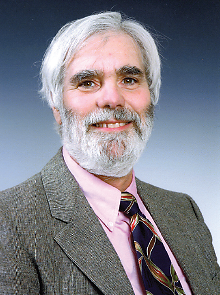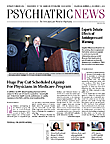Contradictions abound regarding the place of medical marijuana in the United States, Henry Levine, M.D., pointed out at the American Academy of Psychiatry and the Law’s (AAPL) annual meeting in Chicago in October.
“Currently, 23 states and the District of Columbia have legalized marijuana for medicinal purposes, but they have gone well beyond the scientific data in doing so,” said Levine, an assistant clinical professor of psychiatry and behavioral sciences at the University of Washington. At the same time, the federal government has classified marijuana as a Schedule I drug since 1970 because it has “no accepted use, a high risk of abuse, and a lack of safety,” reflecting an era when getting tough on drug and other crimes was the guiding principle.
In the decades since, however, a National Institutes of Health consensus conference, an Institute of Medicine report, the American College of Physicians, and the AMA have all called for further study and/or rescheduling of marijuana.
“I am impressed by the yawning gap between the scientific evidence from short-term studies of effectiveness and safety on one hand and the response of federal agencies on the other,” he said. “Politics still trumps science.”
The official view seems more and more outdated as time goes by, said Levine. Agencies such as the Food and Drug Administration, National Institute on Drug Abuse, and Substance Abuse and Mental Health Services Administration still oppose medical use of marijuana, although the Department of Justice last year announced it would no longer prosecute physicians or patients who recommend or possess the substance for medical use.
Addiction rates for marijuana are lower (9 percent) than for alcohol (15 percent), opiates (23 percent), and tobacco (32 percent).
“There were 15,000 opioid overdose deaths in the U.S. in 2008 alone, more than from cocaine or heroin, compared to none—ever—from marijuana,” he said. Opioid prescriptions increased five-fold between 1990 and 2006, parallel with an interest in the “undertreatment of pain,” only to be replaced more recently by concern about diversion, addiction, overdoses, and lack of long-term efficacy.
Cannabinoids (although not smoked marijuana) have been approved in the United States and Canada for cachexis in HIV/AIDS and for nausea and vomiting during chemotherapy, and in Canada for neuropathic pain, spasm in multiple sclerosis, and intractable cancer pain.
Technically, in jurisdictions where medical marijuana is legal, physisians don’t “prescribe” medical marijuana; they “recommend” it, said Levine. Physicians who choose to recommend marijuana must still adopt a well-structured approach to diagnosis and treatment, as they would with any drug. A good history and physical exam is an essential start.
“Then [they should] develop a treatment review, a specific diagnosis, and a detailed treatment plan that covers more than marijuana,” he said. “Talk to the patient about risks like addiction, impaired driving, or the pulmonary effects of smoking.”
Physicians should also warn patients about the legal risks of transporting into jurisdictions where marijuana is still illegal and the potential employment risks with employers who screen for drugs, he added, and put a time limit on the recommendation and schedule follow-up visits.
Ultimately, more science, including randomized, controlled, double-blind trials, would help pin down the usefulness, safety, and collateral effects of the 60 to 100 active cannabinoids present in marijuana, Levine concluded. Such research might also clarify the current ambiguity at the intersection of the law and the lore of cannabis. ■

